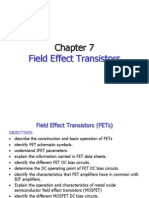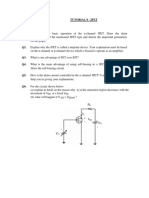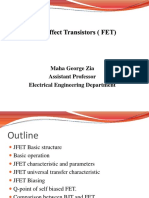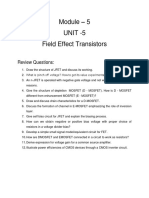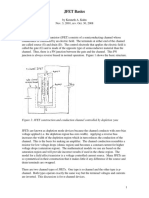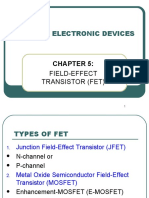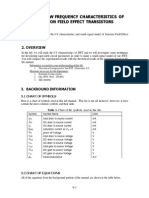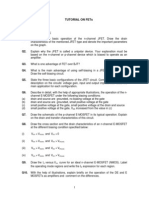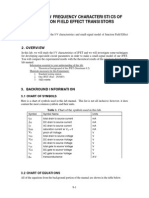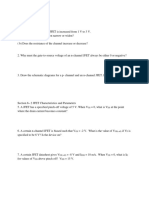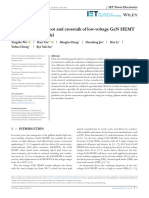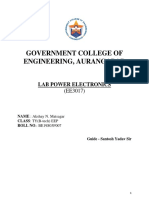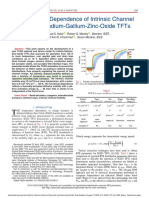0% found this document useful (0 votes)
46 views6 pagesFET Problem and Solution
The document presents various problems and solutions related to Junction Field Effect Transistors (JFETs), including calculations for drain current, gate-source resistance, transconductance, and biasing requirements. Each problem is accompanied by specific parameters and equations necessary for solving them. The document also references figures that illustrate the circuits and characteristics of the JFETs discussed.
Uploaded by
Ken Daniel CadapanCopyright
© © All Rights Reserved
We take content rights seriously. If you suspect this is your content, claim it here.
Available Formats
Download as PDF, TXT or read online on Scribd
0% found this document useful (0 votes)
46 views6 pagesFET Problem and Solution
The document presents various problems and solutions related to Junction Field Effect Transistors (JFETs), including calculations for drain current, gate-source resistance, transconductance, and biasing requirements. Each problem is accompanied by specific parameters and equations necessary for solving them. The document also references figures that illustrate the circuits and characteristics of the JFETs discussed.
Uploaded by
Ken Daniel CadapanCopyright
© © All Rights Reserved
We take content rights seriously. If you suspect this is your content, claim it here.
Available Formats
Download as PDF, TXT or read online on Scribd
/ 6











